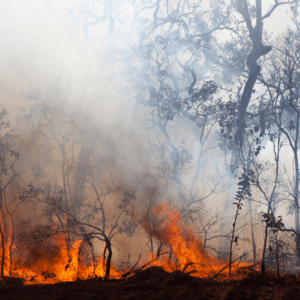Los Angeles Fire, what’s the lesson for us?

The recent Los Angeles fires, like many others across the globe, underscores the urgent need for sustainable and eco-friendly practices to foster a healthier dynamic between humans and the environment. These fires serve as a stark reminder of how interconnected our actions are with the natural world, and they offer key lessons on sustainability.
Firstly, a major contributing factor to the increasing frequency and intensity of wildfires is climate change. Human activities, particularly the burning of fossil fuels, have led to higher global temperatures, prolonged droughts, and erratic weather patterns, creating conditions ripe for wildfires. To combat this, it is critical to reduce carbon emissions and shift towards renewable energy sources, which would help mitigate climate change and its numerous effects, including wildfires. Urban development and land use practices have also played a role. As urban sprawl continues and developments encroach on wildlands, ecosystems become disrupted, and the risk of fire increases. This calls for smarter urban planning that respects natural landscapes, avoids overdevelopment, and incorporates more green spaces. Sustainable urban planning can lessen human impacts on natural areas and reduce hazards.
In terms of forest management, traditional practices such as widespread re-suppression have unintentionally increased re-risk by allowing the buildup of flammable materials in forests. A shift to more ecologically informed forestry practices, such as controlled burns and thinning, can help manage the density of vegetation, reducing fuel for fires, and promoting ecological health and balance.

Furthermore, the reduction of biodiversity due to habitat destruction makes ecosystems less resilient to fires. Protecting and restoring habitats, fostering diverse plant species, and investing in conservation efforts can strengthen these ecosystems, making them more resistant and maintaining the ecological balance. Human communities must also improve their resilience and preparedness for wildfires. This includes building with re-resistant materials, having robust emergency plans, and increasing public awareness about re-prevention and safety. Community involvement and education are crucial to developing infrastructures and practices that resist and recover from wildfire impacts. Historically, human actions such as deforestation, dependency on fossil fuels, and improper land and resource use have significantly contributed to increased hazards. Deforestation for logging and agriculture has made landscapes more susceptible to fires. Our fossil fuel dependence has been a primary driver of climate change exacerbating wildfire conditions. Meanwhile, inadequate land management has often ignored ecological principles, contributing further to the problem.
By learning from these lessons and acknowledging historical mistakes, society can move toward a more sustainable approach that reduces environmental impacts and enhances resilience to natural disasters like wildfires. It requires a concerted effort across all levels to ensure a sustainable future that aligns human activities with the Earth’s natural systems.
